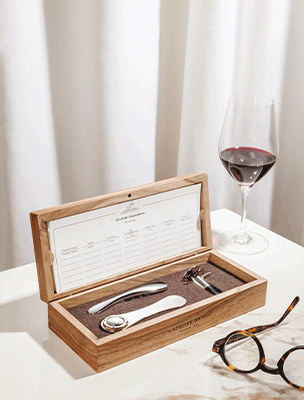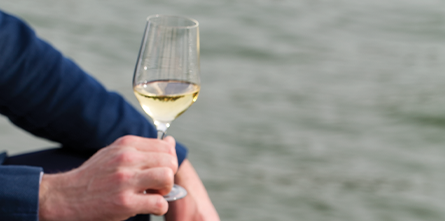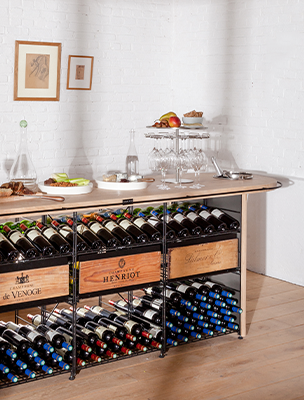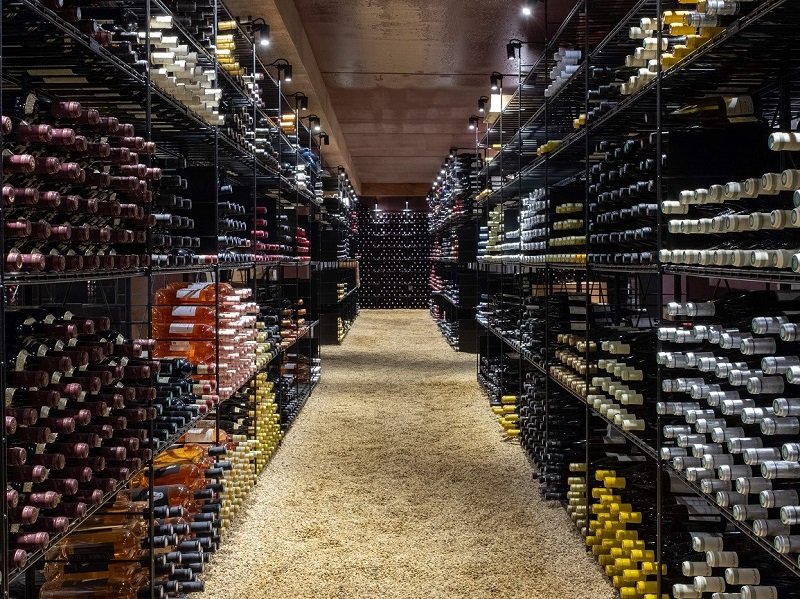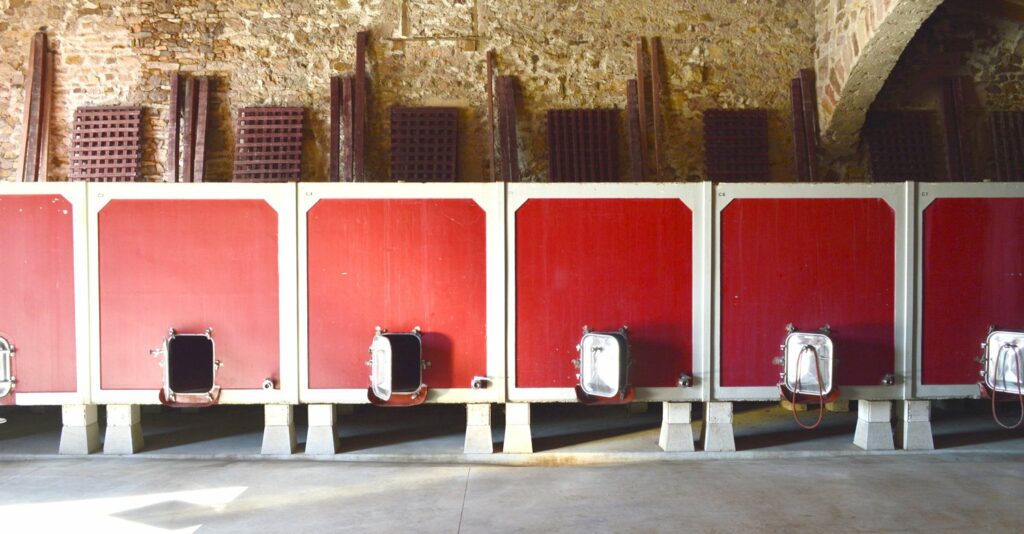
© Livia Succurro
Wine tasting is a particularly enjoyable experience, but do you know how wine is produced? How to “make wine” out of fruit grown on vines? What vinification process is used to produce this age-old drink from juicy grapes? What does direct pressing, malolactic fermentation, pellicular maceration, wine aging, or varietal blending involve?
In oenology, it is important to know how wine is produced to fully understand and appreciate the subtleties of each wine you taste. This comprehensive winemaking guide explains each step of the production process in detail, from the vineyard to the bottle:
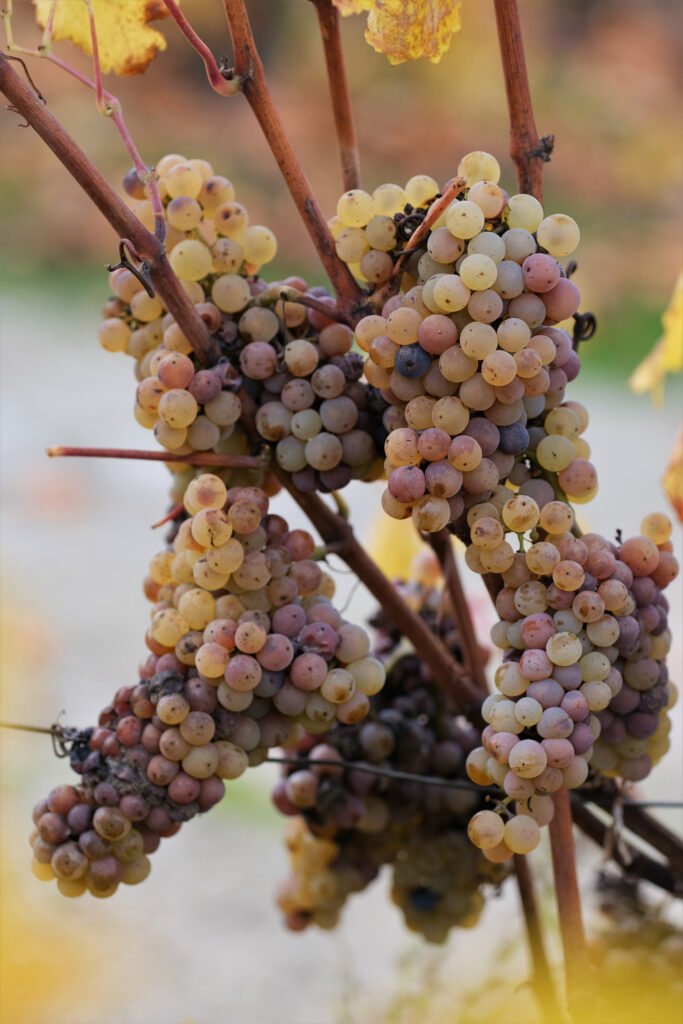
© Alexandre Couvreux
These processes may vary depending on whether red, white, rosé, or sparkling wine is being produced. There are also many local variants, with specific techniques for certain regional wines, making each vineyard’s cru an original creation.
Viticulture: growing vines and grapes
It would take more than a book to describe the art of cultivating vines, mastered by mankind since ancient times. This article will only scratch the surface of the mysteries of winegrowing and its savoir-faire. You can appreciate its richness and diversity on a wine tourism trip around the beautiful vineyards of France. We’ll then go through all the stages of wine production.
Vineyards: a meeting of terroirs and grape varieties
The first step to making wine is to grow vines, which produce grapes.
Winegrowers need to have a good understanding of the local soil composition and climate characteristics to set up a vineyard and grow the right grape varieties. An AOC (Appellation d’Origine Contrôlée) or IGP (Indication Géographique Protégée) vineyard can only produce a vin de pays using certain recognized varieties.
A cépage is a grape variety whose properties directly influence the quality of wine and its aromas. Cabernet Sauvignon or Syrah black grapes, Pinot Gris red grapes, Riesling white grapes… Winegrowers will opt to grow certain varieties, with their aromatic signatures, rather than others, depending on the wine region and type of red, white, or rosé wine they want to produce.
Wine can be labelled organic if the winegrowing area is cultivated organically or biodynamically, using specific techniques, equipment and products, and complies with other environmental and phytosanitary criteria. Nevertheless, other winegrowers also produce wine that respects nature and the health of its consumers, without an organic certification.
Harvesting and sorting
Winegrowers start the harvesting process when the white, red, or black grapes reach their desired maturity (color, size, taste, natural sugar levels, etc). This age-old French tradition takes place towards the end of summer, from mid-August up until early autumn for some wine-growing terroirs, known as late harvesting.
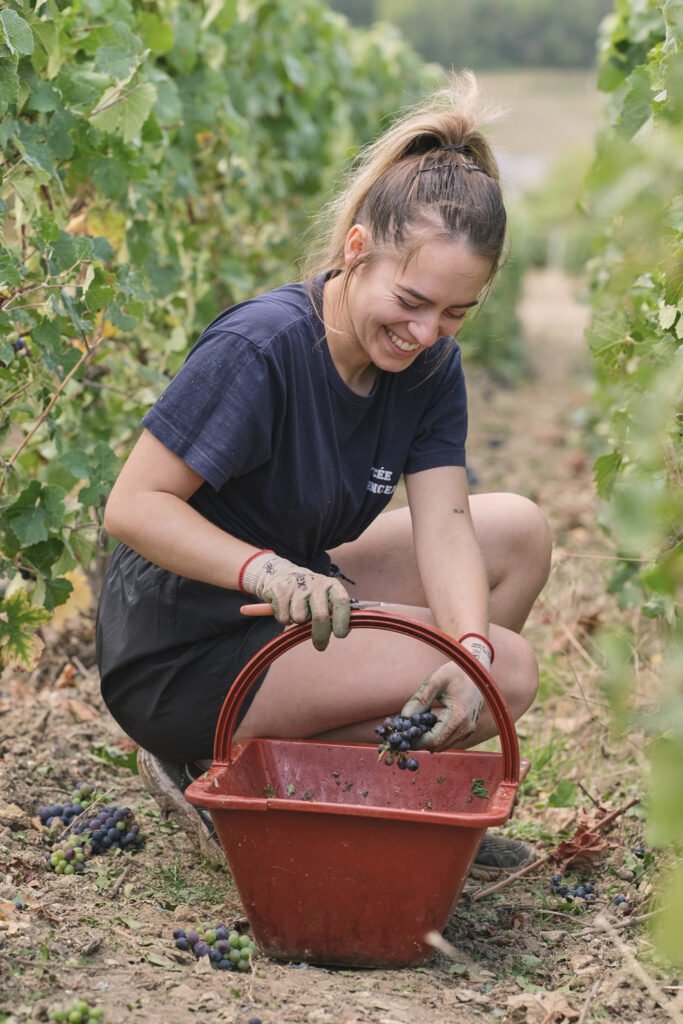
© Alexandre Couvreux
Harvesting consists in hand-picking ripe and healthy grapes (a more qualitative method that involves picking them with secateurs and carrying them back) or using a harvesting machine (a more quantitative technique requiring more sorting after).
At the end of the harvest, the grapes must be carefully sorted to make the best quality wine possible. Juice can be extracted from the grapes and wine produced through vinification after this sorting phase.
Vinification: the transformation of grapes into wine
During the vinification process, winegrowers perform their winemaking alchemy in a winery or cooperative cellar. How are grapes vinified? There are several steps to producing good quality wine. Before starting the alcoholic fermentation process, the grapes must undergo several operations.
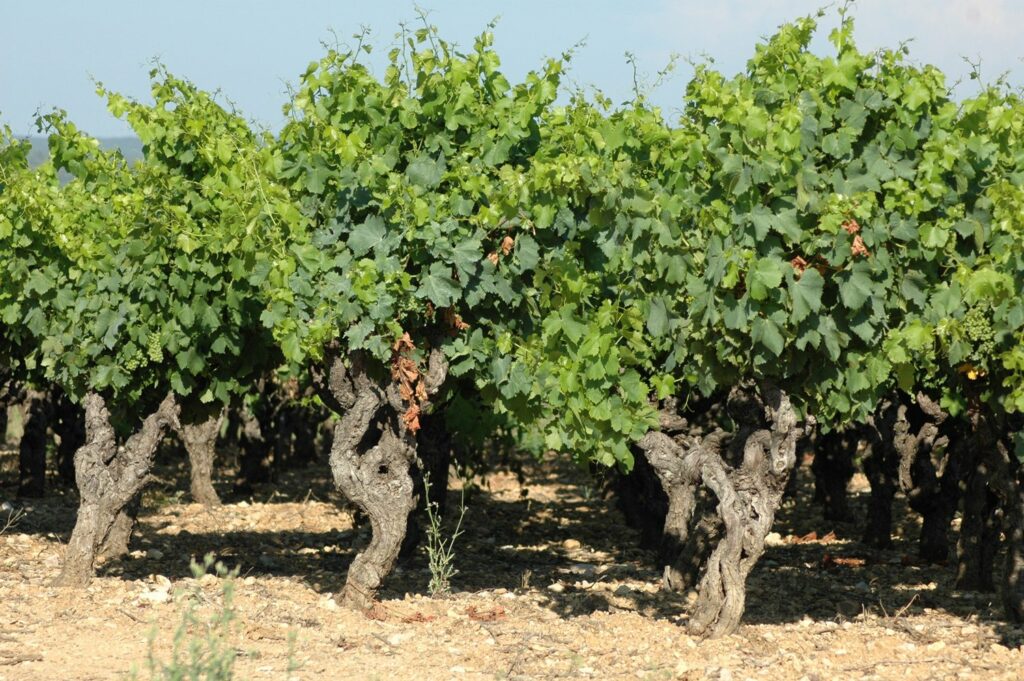
Destemming
How do you go from whole bunches to stalkless grapes? With the destemming phase. Destemming consists in removing the stalks, i.e., the stems on each bunch so that only the grapes remain. Some dry white wine producers prefer to skip this stage because the tannins in the green stems provide the green aroma, acidity, astringency, and herbal notes they’re looking for.
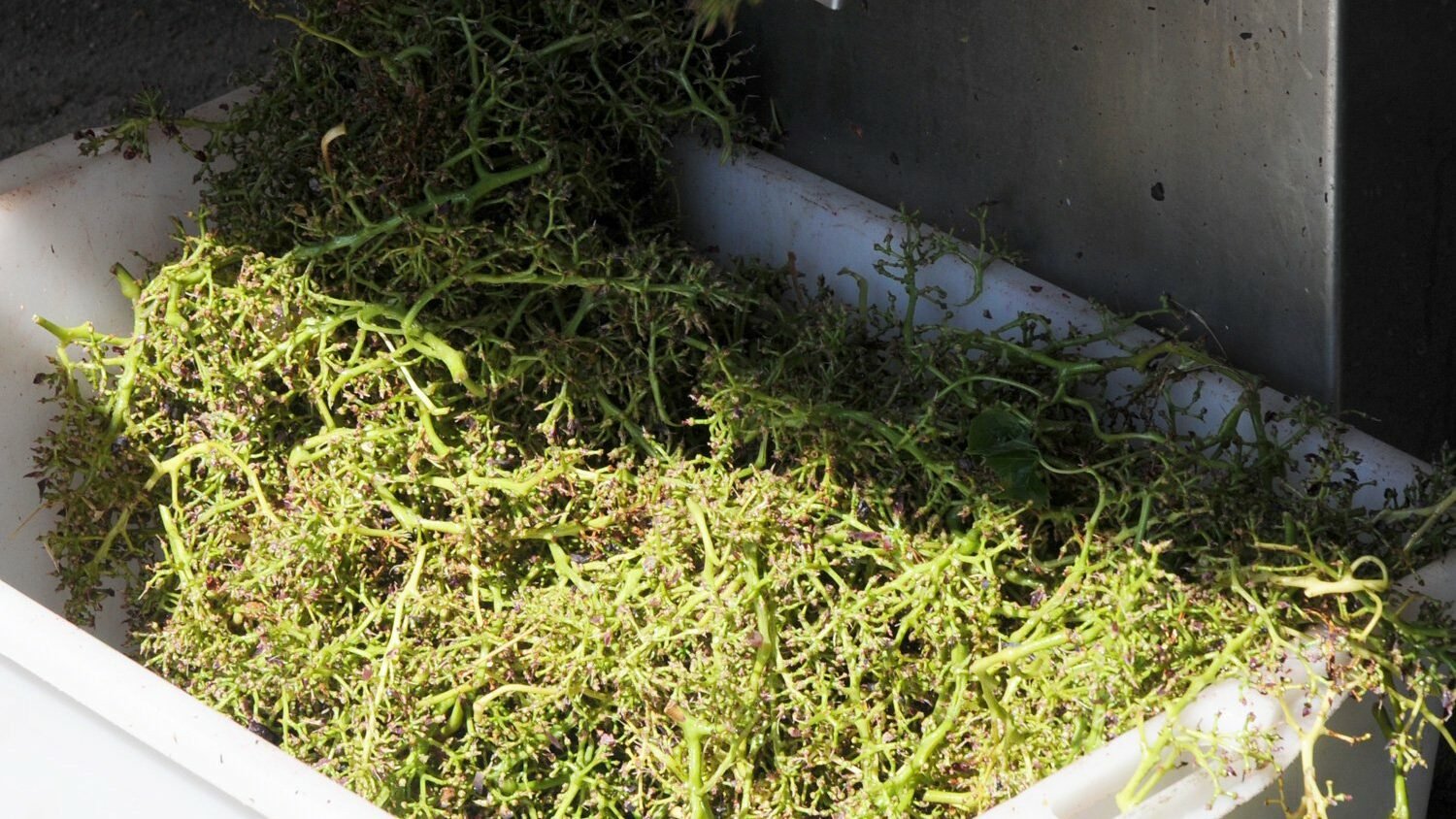
Extracting grape juice by crushing or pressing, depending on the type of wine
The next step is crushing or pressing the grapes to extract the juice. There is a different process for each type of wine.
- Crushing is mainly reserved for red wines, to color the juice with the grapes’ skin. Traditionally, it is known as treading, which involves stomping on the grapes with feet. However today, for hygiene reasons, this process tends to be completed with a machine. The grapes are crushed to obtain the must, made of juice, skin, pulp, and seeds.
- Grapes for white wines are placed directly in a press to separate the juice from the skin and flesh, to maintain its light color. The first press produces “free-run wine”, whereas the second press results in a more concentrated and tannic extract, known as “press wine”.
- Either of these options can be used for rosé wine: a very light rosé wine is obtained by pressing, whereas a well-colored rosé wine, known as a “vin rosé de saignée”, is obtained by treading (or crushing).
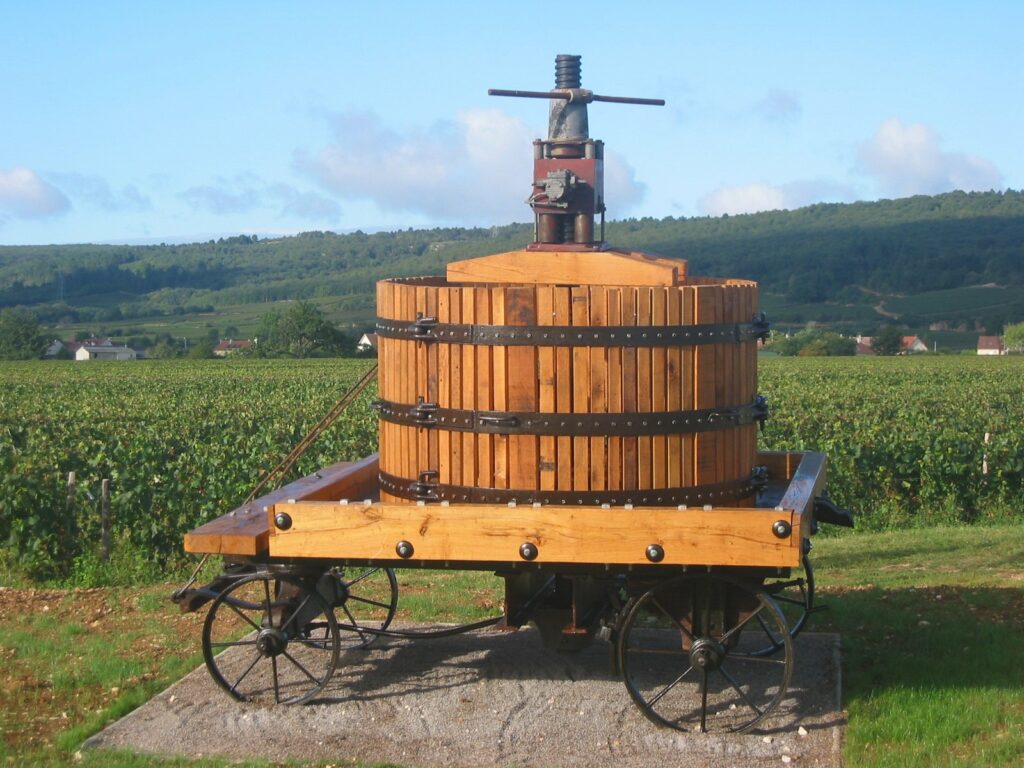
Settling and racking white wine and light rosés
The next step is settling: the juice from the white grapes is poured into a vat, where it settles and further clarifies. Once the sediment has settled at the bottom, the clear liquid is racked into a clean vat. Black or red grapes do not undergo this clarification process and are sent straight to the fermentation and maceration phase.
Alcoholic fermentation
Given the right conditions, grape juice will ferment and turn into wine! Fermentation is key to the winemaking process, as the sugar in the liquid is transformed into alcohol.
This chemical reaction occurs naturally thanks to the yeast in grapes. Alternatively, the alcoholic fermentation of wine can be triggered by adding yeast into the vat. Alcoholic fermentation works when it generates heat. This type of yeast uses the sugar in grapes as fuel to produce energy and transform it into wine alcohol.
- Red wine ferments and macerates directly
- White wine and rosé ferments after pressing or clarification
Maceration of red, rosé de saignée and colored wines
For red wines, maceration is key. Black or red grapes must macerate slowly, without prior settling or racking. This enables all the aromas, and tannins in the skin, pulp, and seeds to infuse the fruity, fermented juice.
Several techniques are used to enhance and intensify the grape flesh: e.g., pumping over, rack and return, and treading which consists in moving and mixing the marc that forms at the top and bottom of the vat, with the fermented must in between.
The maceration of rosé only lasts a few hours, just long enough to give it a nice color. This is known as a rosé de saignée, that has macerated for less than a day, before the alcoholic fermentation. Red wine, on the other hand, can macerate for several days. A strong and tannic red wine macerates for several weeks to acquire its full aromatic depth.
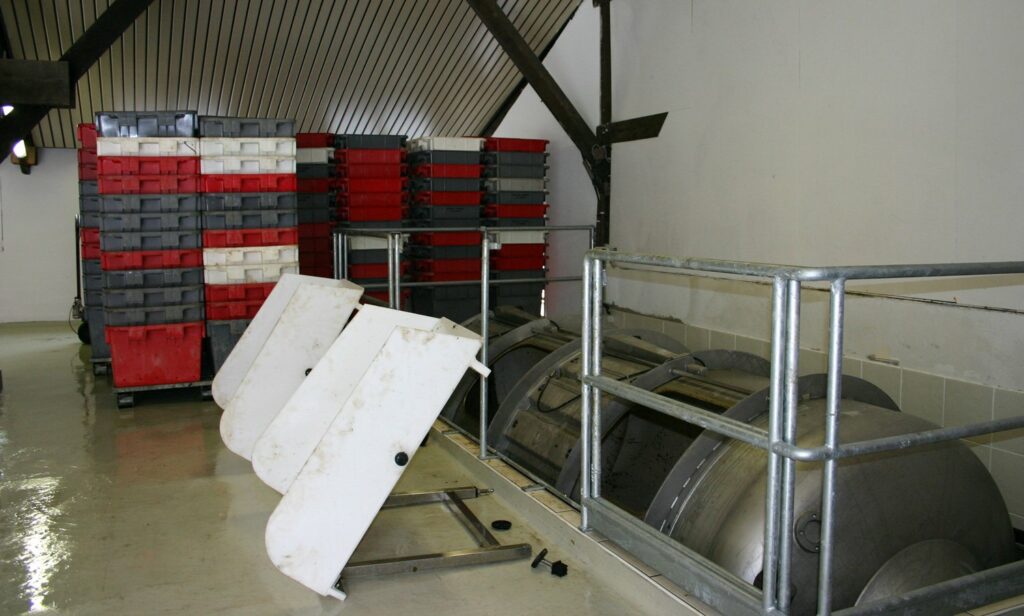
Running off and pressing red wine
Once the must from the black grapes has properly fermented and macerated, the young wine or vin de goutte is separated from the flesh by écoulage (running off), i.e., by draining the liquid into another container without the solid residue (which is pressed separately). The remaining skin can then be pressed to extract “press wine”, or vin de presse, which is highly concentrated and tannic. The producer then subtly blends this liquid with the lighter “free run wine”, or vin de goutte, until they obtain the right aromatic balance and desired notes.
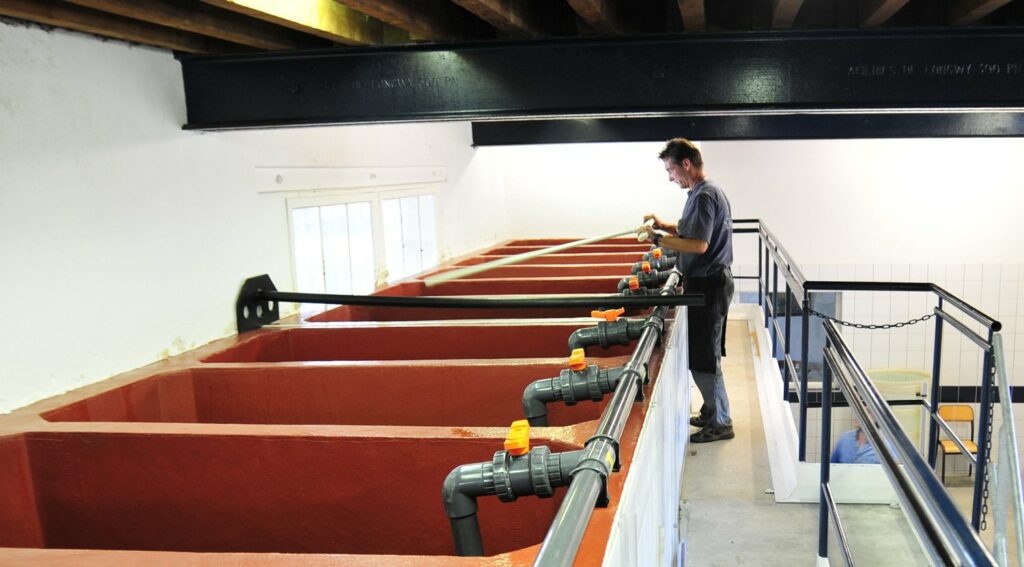
Malolactic fermentation of supple wines
Malolactic fermentation is used to reduce the acidity of wine (mainly reds) and make it smoother, for a more supple, round, and silky texture. This secondary fermentation converts malic acid into lactic acid. This chemical reaction, caused by lactic acid bacteria, produces carbon dioxide in the vats.
Malolactic fermentation can take place at the same time as alcoholic fermentation or later, after several weeks or months, if producers want to soften the wine. This process can also be carried out during the maturation phase, e.g., in casks.
Clarification and Filtering
Once all the vinification steps have been completed (fermentation, maceration, pressing, etc.), the wine is clarified one last time in a new recipient, and filtered to remove the residual marc, i.e., the grape skins and must residue.
Maturation: aging cellared wine
Some wines need to be matured before bottling to develop their full aromatic and organoleptic potential. This wine is aged in oak casks (a traditional method), barrels, amphorae, or vats. The type of container used can bring out new aromas and notes.
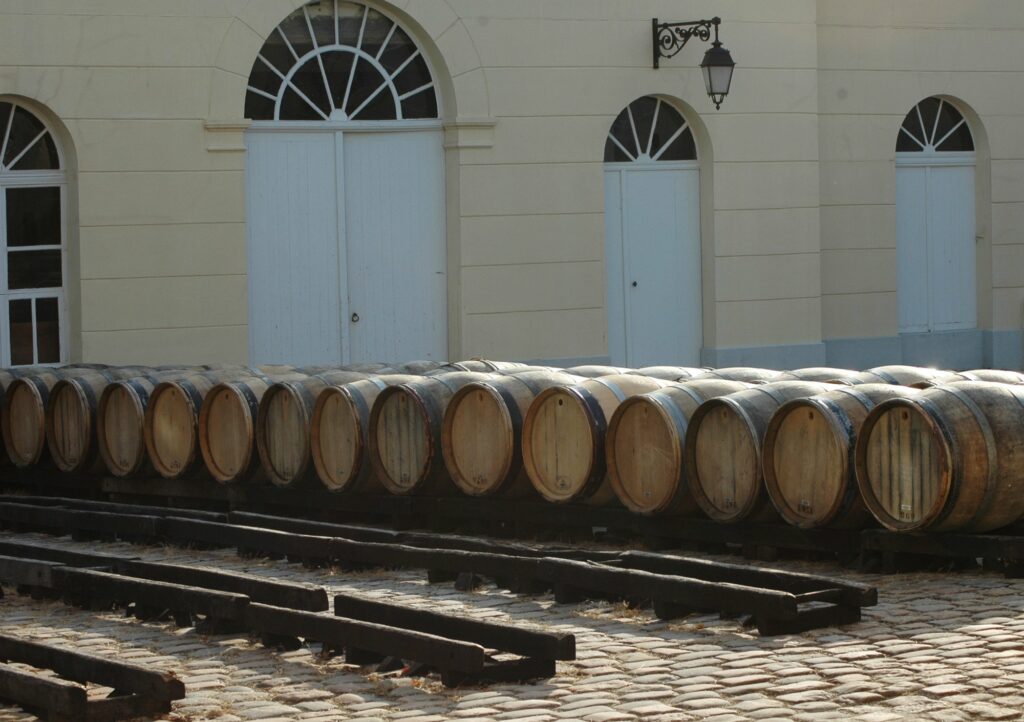
Aging wines before bottling helps to develop greater subtlety, thickness, depth, and character. Young wines may thus reveal interesting qualities, depending on the batch, grape varieties, terroir, and climate, such as finesse, suppleness, complexity, or other oenological virtues enjoyed during a tasting experience.
During this phase, the cellar master must regularly taste the wine to decide whether to continue or stop its maturation. If the liquid levels in the vat drop due to slight evaporation, cellar masters can top it up to prevent oxidation. Aging can last from a few months to several years, especially for cellared wines and great wines in the making.
Blending: a skillful blend of grape varieties and vine plots
Blending follows the vinification and maturation processes. This key stage consists in blending different grape varieties to finally obtain the finished wine. As we mentioned at the beginning of this article, it is important to choose the right grape varieties when setting up a vineyard, according to the terroir and climate.
This choice is crucial when it comes to blending different grape varieties and juice from different plots and containers (vats, casks, barrels, etc.). The process results in the final batch of the year’s wine. Sometimes, winemakers carry out another cycle of clarification and filtering before bottling the wine.
Bottling: an achievement for winegrowers
The invention of a boucheuse, or corking machine, nearly a century ago, made it easier for winegrowers and merchants in our Champagne vineyards to bottle wine. Today, and since 1926, our family-owned company, Sanbri SAS, continues to innovate under the strong and protected name of L’Atelier du Vin ®, whose French manufacturing savoir-faire and high-quality wine tools are renowned around the world.
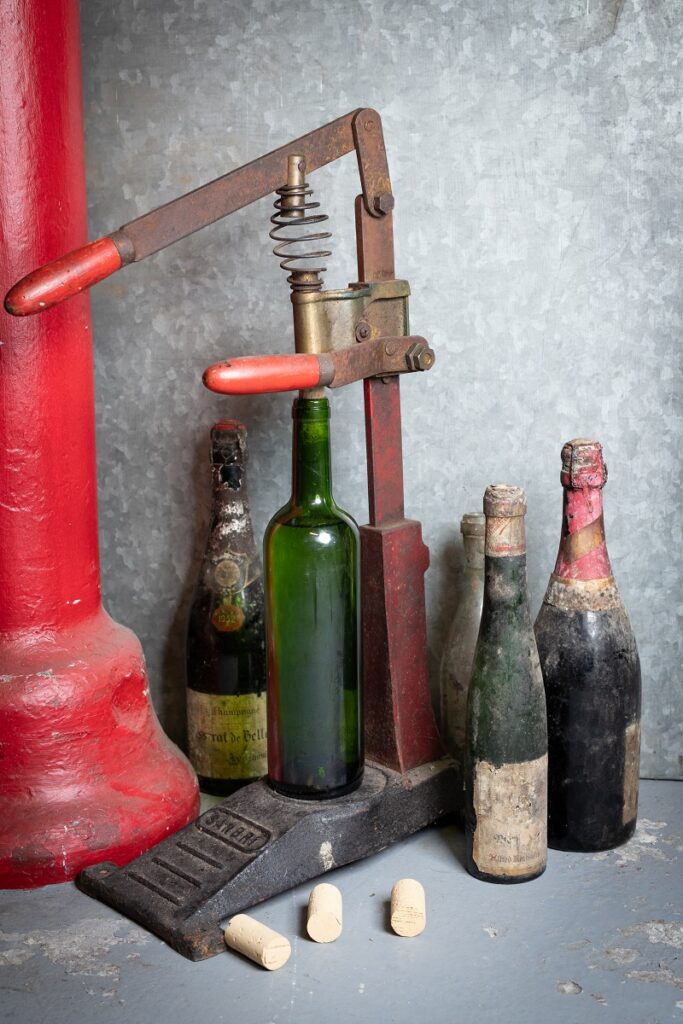
Bottling is the pinnacle of winemaking and an achievement for winegrowers and producers. The process is usually carried out directly on the property, in the winery, to protect from counterfeits and unauthorized blends.
The wine is gently pumped out of the vats into clean and sterile glass bottles up to the correct fill height. A cork that often bears the name of the vineyard is then quickly inserted into the bottle (synthetic corks or screw-on metal stoppers are also sometimes used).
A wine capsule is then placed on top to protect the cork, along with a label bearing the vineyard name and batch reference. Finally, after one last cleaning, the bottles are ready to be packed in wine cases or boxes.
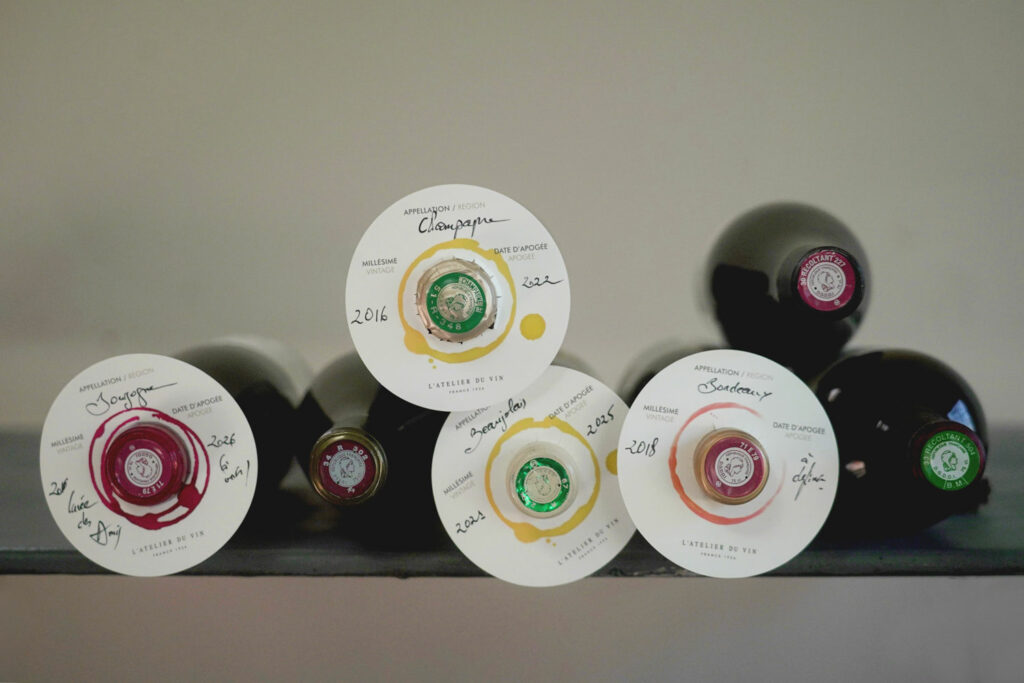
Aging wine in a cellar
You may prefer to wait a few years before tasting a vin de garde to allow it to reach full maturity. Don’t hesitate to ask a wine merchant, sommelier, or oenologist for advice.
Aging should take place in a wine cellar. Such spaces must provide certain wine preservation conditions, including temperature, humidity levels, light, air quality, and stability.
Is it finally time to taste that bottle of wine you’ve been saving? Check out our collections of exceptional corkscrews and oenology tool cases by L’Atelier du Vin, a French manufacturer serving the wine world and connoisseur oenophiles since 1926.
Copyrights.
Editorial, visual and graphic elements strictly linked to copyrights. For any request of partial or total use, contact us.


